Artist and environmentalist Wolfgang Buttress has long been a Friend of the River. His 2016 album ONE (recorded by a collective of musicians working under the name BE) was the soundtrack to a monumental art installation (The Hive, now housed at Kew) and the first album released on Caught by the River’s in-house label, Rivertones. Five years since that album’s critically acclaimed release — and on the occasion of World Bee Day 2021 — we decided to catch up with Wolfgang to talk art, bees and drones in the key of C.
Why bees? How did they end up becoming so much a part of your life’s work?
I moved to the sea when I was 11. The transition from a sprawling housing estate in Birmingham to the North Cumbrian coast was transformative. I remember the feeling of being constantly in and around nature rather than observing it from afar. Prior to that, my earliest memories of the ‘natural’ world are of annual trips to see the German side of my family who lived in and around Bremen and occasional trips to the zoo. There are landscapes which can be found between Port Carlisle and Allonby which share a similar bleak beauty with the marshes where my German family lived near Osterholz-Sharmbeck. Those simple and arresting landscapes of marsh, reeds, silver birch and sky have been a constant reference point to me as an artist. These fluid and liminal spaces between sky and water have always fascinated me. They are inside me and I am drawn to places that remind me of this.
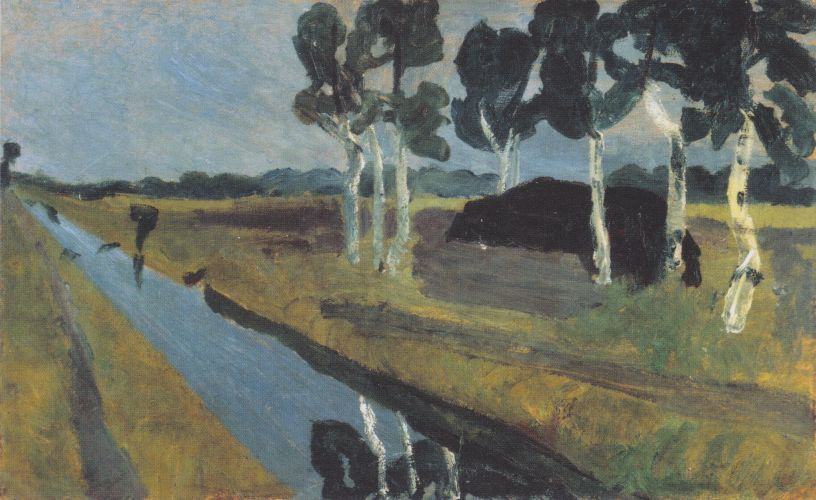
Grey Landscape With Moor Canal, Paula Modersohn Becker, 1889
I’ve been sketching these landscapes for forty plus years, usually from memory. What they are and what they signify both haunts and reassures me. The passing of time and memories, both real and imagined, has informed my experience of the ‘natural world’, they’ve shaped my perception of beauty. When I am in them I feel I am simultaneously walking towards and away from something.
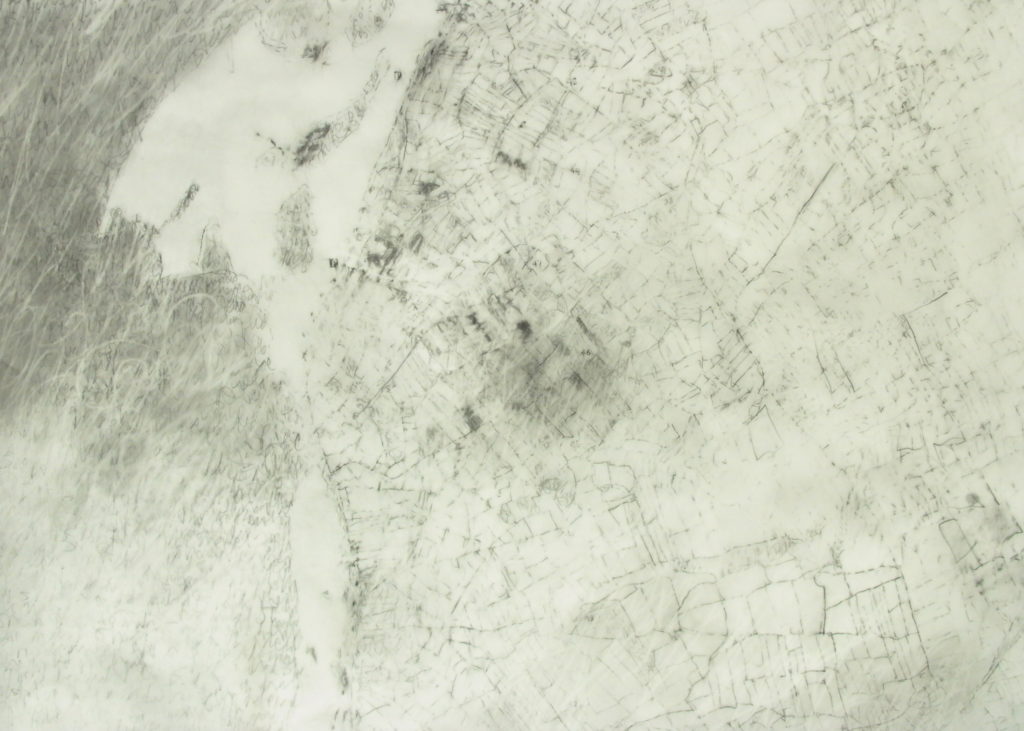
The Tide Marks Two Hearts, Wolfgang Buttress. Graphite on tracing paper, 1998
Landscape always changes, nothing remains the same. It is fluid. What we see and feel as solid has evolved from or been affected by time, circumstance or people. I remember seeing the Lake District for the first time driving North on the M6 just past Kendal; its power and beauty overwhelmed me. The landscape felt alien and primal. Later on in life I was shocked to learn this elemental power had in effect been irrevocably altered and shaped by man’s activity — most significantly sheep farming. It is this space between memory, landscape and how we affect this both in our memory and in our action that has formed the basis of so much of my work as an artist growing up.
I’d been aware for a long time that the bee population was in an existential crisis. We’re responsible for this due to climate change, the use of pesticides and how we choose to farm the land. Flowering plants and bees have developed a symbiotic relationship over 120 million years. Bees help pollinate over 30% of the food that we eat. Biodiversity is essential for the planet’s health.
The disconnection between ourselves as a species and the ‘natural’ world has probably never been more pronounced. The existential threat that bees are facing is caused by us. We are also facing the same threat. We are not apart from nature, we are nature. Bees are so perfectly tuned to their environment, they can be seen as sentinels. Like canaries in the mine they perfectly and tragically reflect our actions. They are dying and our landscapes are dying. The life and death of bees is both a portent and symbol of our existence. We can change this if we choose. I never thought that something so small could and would affect me so much.
What did you learn about bees during your time working on The Hive? Were any preconceptions shattered?
I’m no expert on bees. I first started talking in detail about these incredible insects with an old friend — Esther Coles — in 2013. Through those conversations, I sought out Dr. Martin Bencsik — a quite brilliant scientist who became a very close friend and an essential collaborator on many of my art projects. Through his research and the use of accelerometers (vibration sensors) he has discovered a whole new vocabulary in how bees communicate both amongst themselves and, consequently, to us.
I learnt for example that bees as a superorganism are incredibly intelligent and organised. I was amazed to experience that a swarm of bees can walk and crawl all over your body without stinging you if you remain calm. At this point bees are more interested in finding a new nest and having sex than killing themselves by stinging you.
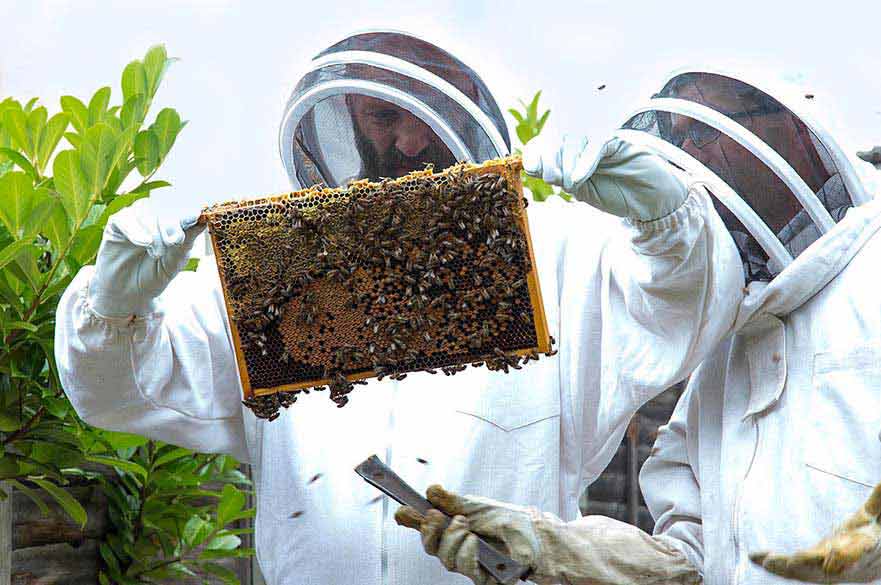
Wolfgang Buttress and Dr. Martin Bencsik, 2013
Where did the idea come from to try to replicate the work life of a bee sonically? Was there music that already made you think of bee activity?
I was toying with the idea of entering an international competition to design the UK Pavilion for the World EXPO in Milan. The theme was ‘feeding the planet’. I knew that bees pollinate 30% of the food that we eat and they are in crisis. I had an idea to use bees as a living metaphor for the existential threat to the environment. I wanted to create a bee-friendly landscape with a sculpture somehow connected to this. Dr. Bencsik showed me live data streams from various beehives which he looks after. He analyses these streams to ascertain the health of the hives; to see how active they are and to listen to vibrational signals beyond human hearing range to uncover new and previously unknown sounds of bees communicating with each other.
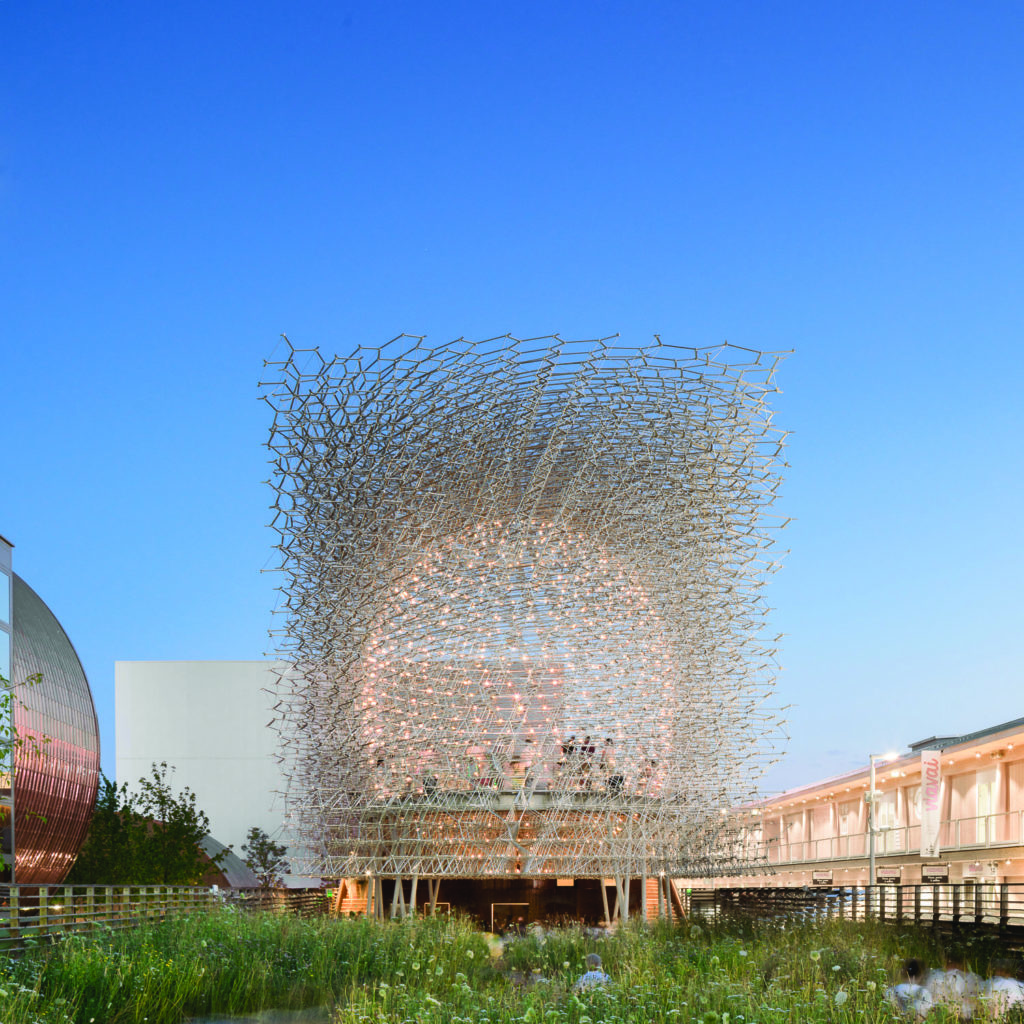
The Hive and UK Pavilion, Wolfgang Buttress, World EXPO Milan 2015
Martin opened up one of these hives for me to experience in 2013. It was amazing and, ultimately, life-changing. Seeing thousands of insects co-existing in this previously dark and unseen world was incredible. The smell of the honeycomb and propolis was so beautiful but the thing that really hit me was the sound. I was expecting something aggressive and intimidating but the atmosphere was calm. The sound was low and slowly pulsing, creating an immediate visceral connection with the bees and the earth. It was an epiphany; I thought this is the sound that people should hear. I thought that people would possibly empathise with the bees’ plight if they could their ‘voices’. I wanted to somehow create a conversation between bee and human. I had the idea of creating a library of musical stems created by musicians which would be triggered by the activity of the bees. No moment would be the same, it would be an ever-changing symphony of bee and human.
Those two minutes in 2013 changed everything for me. The sculpture would be called The Hive and it would be a vessel or portal to express the real-time energy of bees as light and sound. I wasn’t aware of any music that existed that could express the atmosphere that I imagined in my head. There needed be a drone; something calming, fluid, nervous, meditative, sad and peculiar. I thought of Can, Harmonia, Eno, Velvet Underground, Burial, Earth, Erik Satie, Steve Reich. I knew Tony Foster and Kev Bales who play with Spiritualized and really liked their approach to the drone, repetition and beauty. I thought they’d be perfect collaborators and they were/are.
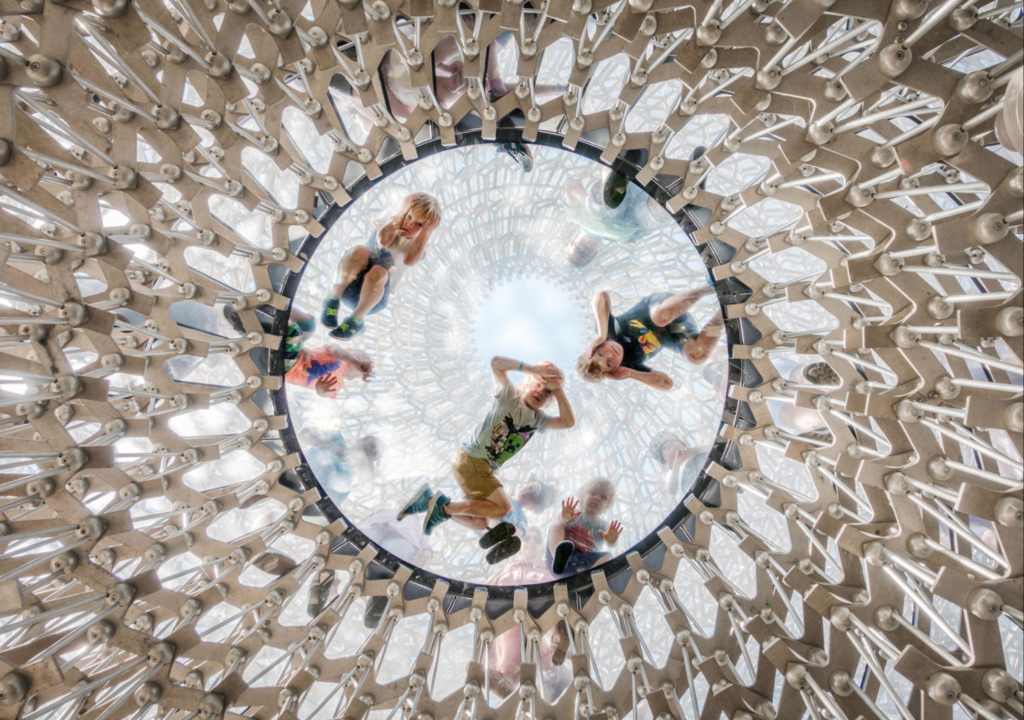
Under The Hive, Wolfgang Buttress, World EXPO Milan 2015
Did you (and Kev and Tony) find the sound (for the installation and subsequent album) quickly or was it a longer process?
I invited Dr. Martin Bencsik into the studio and then asked cellist Deirdre Bencsik and singer Camille Christel to come and hear him talk about his research with Kev and Tony. We set up a recording booth for the cello and voice and streamed an audio feed of bees into the studio. Deirdre quickly realised that bees hum in the key of C, so she started to improvise before Camille started to sing. I asked Deirdre to tune her cello down to a really deep C. Thankfully the microphones were switched on and we captured this first emotional improvisation. That initial performance and recording of live bees, human voice and cello drone was both life affirming and formed the spine of the album. It felt that we had captured something fleeting, ephemeral and very special.
Tony, Kev and I then worked on creating a loop from the cello drone along with the bees and sent the stems to various artists that we thought would like to contribute and collaborate on the project. Within weeks we had a range of beautiful, diverse and peculiar stems from Jason Spaceman, Youth, Amiina, Camille Christel, Rob Howard, Deirdre Bencsik and John Coxon.
We then spent months curating a music library for The Hive sculpture from our own composed stems and contributions from the other musicians.
When it opened at the World EXPO Milan 2015, The Hive was well received critically, winning over 25 awards including gold medal for best in show. The ever changing and responsive soundscape was crucial to how it was experienced and received. It seemed only natural for us to record a series of tracks which would try and express how the soundscape changed in The Hive over the course of the day as a document and legacy. We originally pressed a small vinyl run as part of a book my studio produced about the Pavilion. That music found its way to Jeff Barrett who loved it and felt it would be perfect fit for the fledgling Rivertones label. We’d always thought it was so niche that it might only sell 20 copies but it sold pretty well and got some great reviews. We ended up playing the tracks live — with a live feed of the bees — all over the UK including shows at Glastonbury, End of the Road, Blue Dot and Coventry Cathedral.
How has your understanding of our environment changed in the five years since you put out BE ONE?
There continues to be shift in consciousness about our relationship with the environment. It feels like we’re at a crossroads and a tipping point. We are all complicit in what we do or choose to do.
I think that my understanding has become more crystallised and focused over the years. One of my fundamental ambitions as an artist is to continue to create installations which emotionally connect the audience with the environment. An ever-changing, personal experience can hopefully encourage a deeper sense of empathy and possibly subsequent positive action.
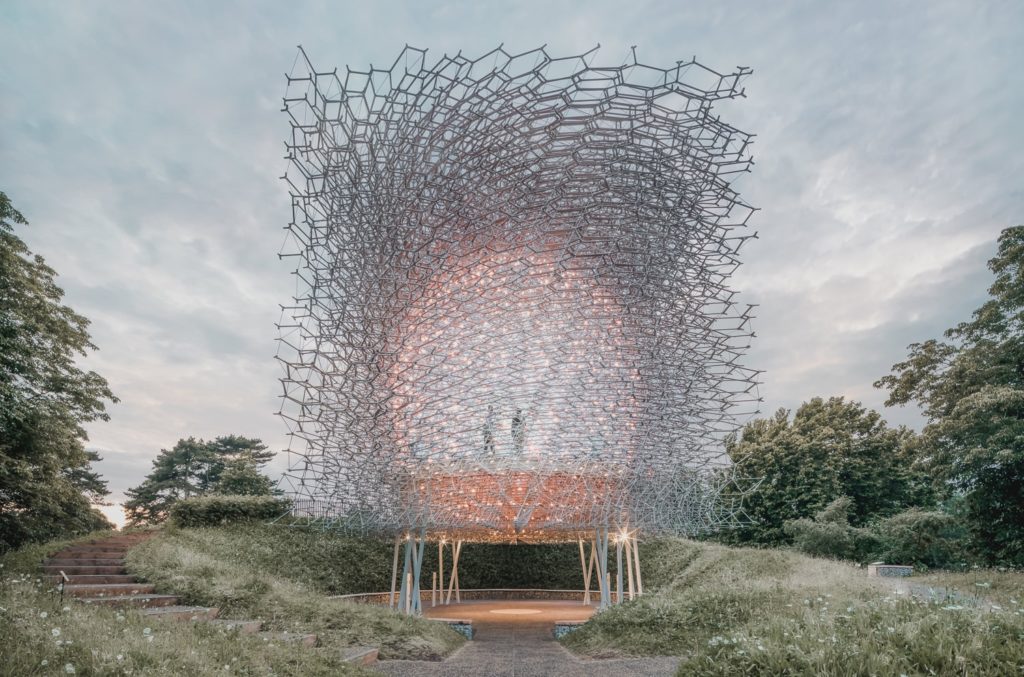
The Hive, Wolfgang Buttress, Royal Botanic Gardens, Kew, 2016
How does it feel when pieces like The Hive or Beam are placed in the real world (Kew, the Glastonbury site) and allowed to become part of a new landscape? Does it feel like work is never completed, more left to evolve?
I’d always hoped The Hive would have to have a second life after its six months in Italy, so I was delighted when it was offered a permanent home at Kew. I am also very happy that BEAM has remained on the Glastonbury site to become a bee hotel for local pollinators and for other artists to perform in and from. Your point about the work never being finished is a good one. These are artworks in public spaces and in some ways I have to let them go and allow them to evolve after they are installed. Encouraging evolution is a good thing — over time an installation like BEAM will rot and return to the earth.
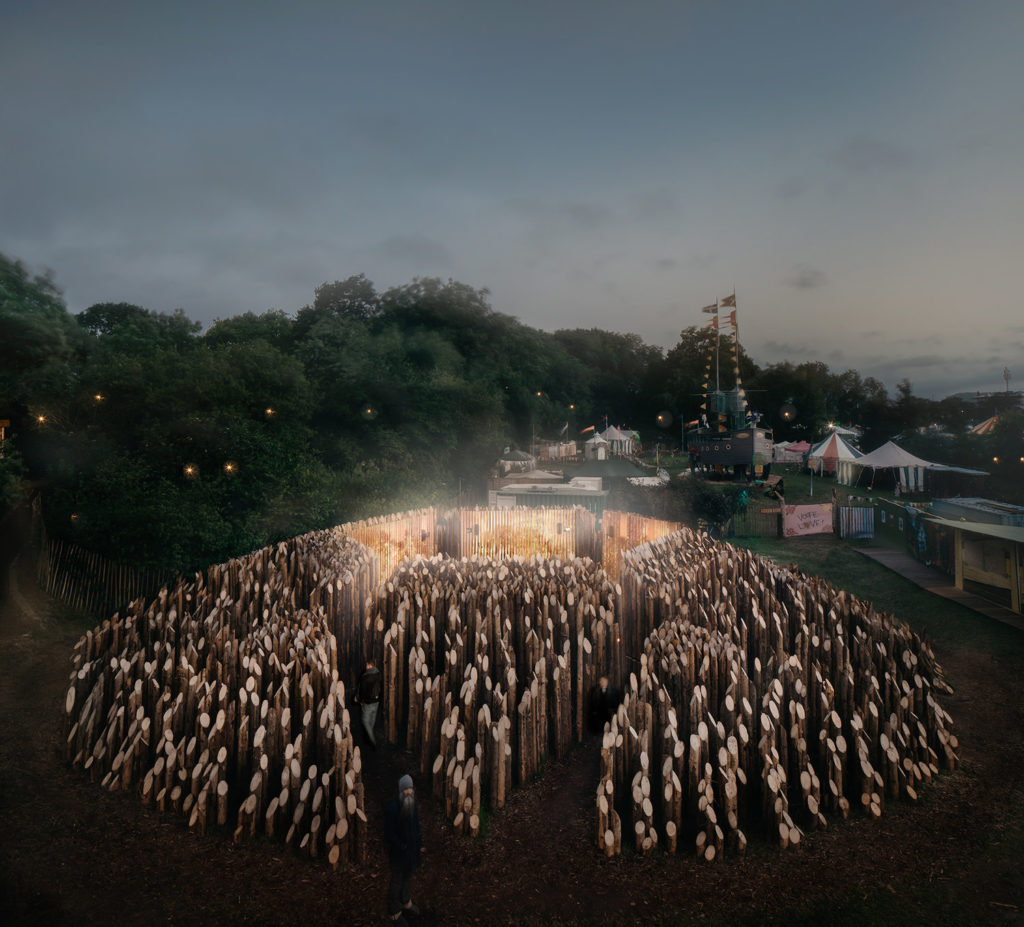
BEAM, Wolfgang Buttress, Glastonbury 2019
When was the last time you got stung by a bee?
You know, I can’t remember. A long time ago. I’ve been fortunate, I don’t think I have been stung in the last ten years.
*
BE•ONE is available here on vinyl, CD and digital.